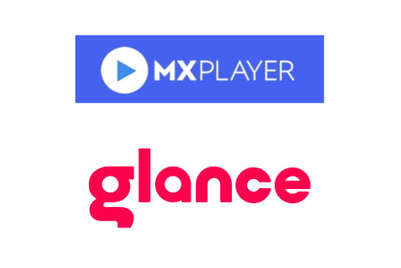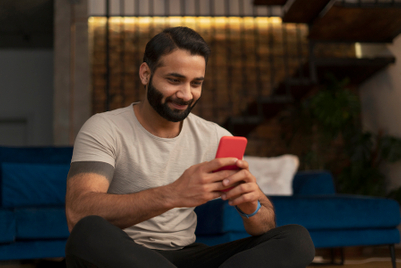
“The second screen can turn TV viewing into a shared experience, enable fans to go deeper into the story world, allow instant follow-up on a call to action, extend a message beyond the limits of 30 seconds—and the list goes on,” said Ann Mack, director of trendspotting for JWT. “In doing so, marketers are turning what could be a negative—media multitasking and distraction—into a positive: an immersive brand experience.”
We’ve selected the standout ways marketers are leveraging multi-screen viewing from JWT’s latest trends report.
1. During big live events
During the Super Bowl, Coca-Cola took its commercials featuring animated polar bears one step further with ‘Polar Bowl’. Two bear viewers (one rooting for the New York Giants, another for the New England Patriots) reacted to the game, the halftime show and commercial in near-real time. The bears also commented via @CocaCola on Twitter. While the brand initially planned for 300,000 live stream viewers, it ended up attracting more than double that number with viewership growing as viewers talked about Polar Bowl on Facebook and Twitter.
2. Incentivising ad engagement
Mobile phone apps create the opportunity for brands to reward TV viewers for watching commercials or branded messaging. Incentives can range from freebies and coupons to recipes – often leading consumers right into an opportunity to purchase.
A wave of new apps that reward users for watching shows or even ads on TV using Shazam-like recognition software has been providing brands with a new way to reward consumers in the US. Pepsi, for instance, used Yahoo-owned app IntoNow to reward users for finding and tagging a Pepsi Max commercial with digital coupons. Since a tag is broadcast to users’ social media streams and to a news feed within the app, it automatically spreads word about the ad.
Unilever used a similar app, Viggle, to promote its Dove Men+Care range during 'March Madness'. When viewers checked in to broadcasts of the college basketball games, they were directed to a Dove Men+Care landing page that offered extra Viggle points for watching Dove’s “Journey to Comfort” videos, featuring three basketball legends including Shaquille O’Neill. The landing page included live tournament stats and an Amazon e-commerce link.
Speaking of Shazam, General Mills ran a spot for its Crescents dough that rewarded Shazam-ers with recipes.
3. Gamifying TV Ads
You can’t go wrong turning ad-viewing into a game, provided it’s a fun game.
Coca-Cola and McCann Erickson paired up to create Chok, an app for the Hong Kong market that turned users’ phones into a mechanism for collecting virtual bottle caps. When signaled by the music in a Coca-Cola TV commercial, the app opened and synced to the ad, then prompted consumers to shake the phone (“chok” is Cantonese for this action). Using the device’s accelerometer, the app measured the vigor of the motion and doled out bottle caps accordingly. These could be used to enter an instant drawing for prizes big and small, including digital goods like mobile games. Within 15 hours of launch, Chok became the No. 1 free app in Hong Kong.
In the UK, Honda launched an animated TV commercial, including a gaming component, for its Jazz hatchback. Viewers who downloaded the related iPhone app could use it to “catch” on-screen characters by physically swiping the phone at the ad (be it on a TV, computer or iPhone). They could then interact with each character—for example, making it dance by singing into an iPhone’s microphone. Users were encouraged to keep viewing the ad to catch all the characters.
4. Bridging a campaigns’ offline and online elements
A marketer’s dream made live, apps like Shazam can also be used to link consumers with a TV commercial’s online elements.
Progressive Insurance found an all new-way to sell insurance when a TV spot featuring popular brand spokeswoman “Flo” took Shazam users to a custom mobile landing page, where they could call for a car insurance quote or download custom wallpaper for their mobile device and a Flo-isms app.
5. Syncing e-commerce with TV content
Beyond home shopping networks, new technology lets buyers tap into the momentary rush of “I want that!” which TV ads hopefully create. You could say attempts in this arena are still in the experimental stage.
eBay US has tried to tap into this with an app that lets users “shop their favourite shows”. Users input their postal code and cable provider to set it up, then enter the channel number in order to see live auctions linked to what’s on the screen. In theory, the app brings up products related to the TV content: a basketball jersey during March Madness, a Jessica Simpson brand T-shirt during the show Fashion Star. In practice, however, it turns up just as many unrelated items (Ringer, for example, summoned a bounty of ringer T-shirts; Fox’s Bones turned up unaffiliated Bones brand skateboard wheels).
6. Giving sports fans a game of their own
Never get between a sports fan and his TV, unless you’re going to make the experience even better. In 2011 Heineken released an iOS app, Star Player, that provided a second-screen gaming experience for the soccer fan without distracting from what matters most: the match. Star Player allows viewers of UEFA Champions League games to interact with the action in real time (and, with the latest update, in eight languages), syncing with the game clock when the match begins. Users then earn points by predicting game events such as goals and corner-kick outcomes and by answering questions during periodic pop-up quizzes. Players compete against friends, in a mini-league, and can also check their rank against all the app users. “Dwell time” with the app has averaged 56 minutes.
7. Creating transmedia opportunities
Transmedia—the practice of arcing story worlds over various platforms, with each thread tailored to the platform it lives on—is becoming a bigger buzzword with the proliferation of second screens. These can serve as a key entry point for consumers seeking deep engagement, with different channels communicating different things and is very much a new media space.
Backcountry freestyle snowboarding competition Red Bull Supernatural was Shazamable when it aired on NBC in March. Shazam users could access point-of-view footage for several competitors, enabling them to see both the wide view on the big screen and the snowboarder’s own dizzying perspective on a second screen. Shazam also linked app users with related social-media streams. Evan Krauss, executive vice-president of advertising sales for Shazam, said the percentage of viewers using the app in combination with the show was “through the roof”, with video viewership around 130 per cent—meaning users watched more than one video each.
The article first appeared on Campaign Aisa-Pacific


.jpg&h=334&w=500&q=100&v=20250320&c=1)

.jpg&h=334&w=500&q=100&v=20250320&c=1)
.jpg&h=334&w=500&q=100&v=20250320&c=1)
.jpg&h=334&w=500&q=100&v=20250320&c=1)









.png&h=268&w=401&q=100&v=20250320&c=1)

.jpg&h=268&w=401&q=100&v=20250320&c=1)
.jpg&h=268&w=401&q=100&v=20250320&c=1)
